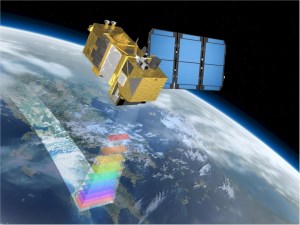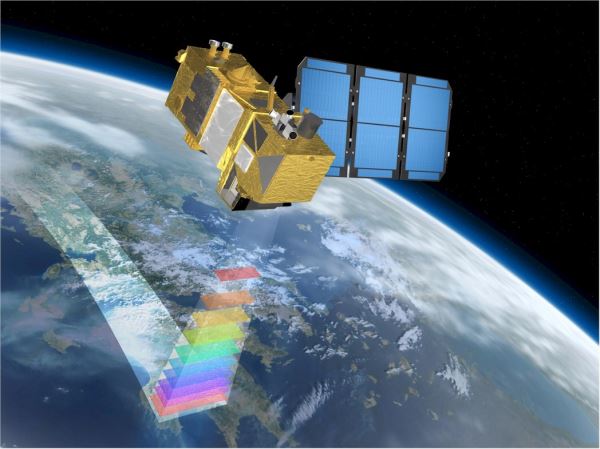A new partnership will see the University of Sydney work closely with Germany’s national space agency the German Aerospace Centre (DLR) on new space engineering projects – which could include building an Australian-first multi-spectral satellite.
In a memorandum of understanding (MOU) signed earlier this week at the International Astronautical Congress in Adelaide, the two institutions have committed to work closely together over the next three years to participate in collaborative research, teaching and other activities.
At the University of Sydney, these activities will be spearheaded by the School of Aerospace, Mechanical and Mechatronic Engineering, which is part of the Faculty of Engineering and Information Technologies.
The MOU was signed by Dean of the Faculty of Engineering and Information Technologies Professor Archie Johnston, DLR Executive Board Member for Space Research and Technology Professor Hansjörg Dittus and DLR Space Research and Technology Program Director Dr Hubert Reile.
Exploring real-world applications
“We are thrilled to be partnering with one of the world’s leading space agencies,” said University of Sydney Vice-Chancellor and Principal Dr Michael Spence.
“This partnership will ensure the University of Sydney’s researchers, students and graduates play a leading role in the future of space exploration in Australia and beyond.”
Professor Johnston said the University of Sydney, is interested in going beyond the science and theory of space engineering to explore real-world space engineering applications.
Professor Dittus said his organisation is looking forward to achieving exciting results through the joint collaboration.
One of the first collaborative activities will be led by the University of Sydney’s recently appointed Executive Director of Space Engineering Warwick Holmes – an avionics engineer who tested and launched 10 spacecraft for the European Space Agency over a 30-year period, including the famous Rosetta probe.
“We would like for DLR to help us with the design, building, integration, testing, launch preparation and operations of a small 0.5 cubic metre volume, 150kg Earth observation satellite, which we are calling the ‘Multi Spectral Satellite for Australia and Deutschland’ – or MISAD for short,” said Mr Holmes.
Specialised multi-spectral cameras
Mr Holmes said MISAD would carry specialised multi-spectral cameras to capture images of the Australian landscape to help farmers, environmentalists, government departments and geographical information systems for the benefit of all Australians.
“The answer to global climate change can only be global collaboration,” said Dr Reile.
“MISAD will be the Australian version of DLR’s well-known BIROS [Berlin InfraRed Optical System] satellite, which has been deployed on missions to detect and monitor high-temperature events, such as forest fires,” Mr Holmes added.
The cameras on the MISAD would also be optimised to detect water quality of lakes, rivers and dams.
Detecting bushfires from space
“These cameras would have the ability to detect when a dangerous algae-bloom is about to choke the precious inland water supply of the Murray-Darling basin, for example. This allows environmental agencies to release an environmental flow of water or necessary environmentally appropriate chemicals to prevent the algae from developing,” said Mr Holmes.
“Similarly, MISAD would carry a very sensitive infra-red camera for detecting bushfires from space. This means bushfires down to just a few metres in diameter can be detected from space anywhere on the Australian mainland.”
Mr Holmes said MISAD would be the very first Australian Earth observation satellite completely operated by Australia and used to image the country without being under the control of another entity (such as NASA, the US military, or commercial suppliers).
“If the project gets the go ahead, we believe it will also be the most advanced and sophisticated satellite built in Australia to date,” he said.
Over the longer term, the partners also intend to explore other collaborative pursuits which may include scientific earth observation missions, inter-country visits, and mobility programs.


